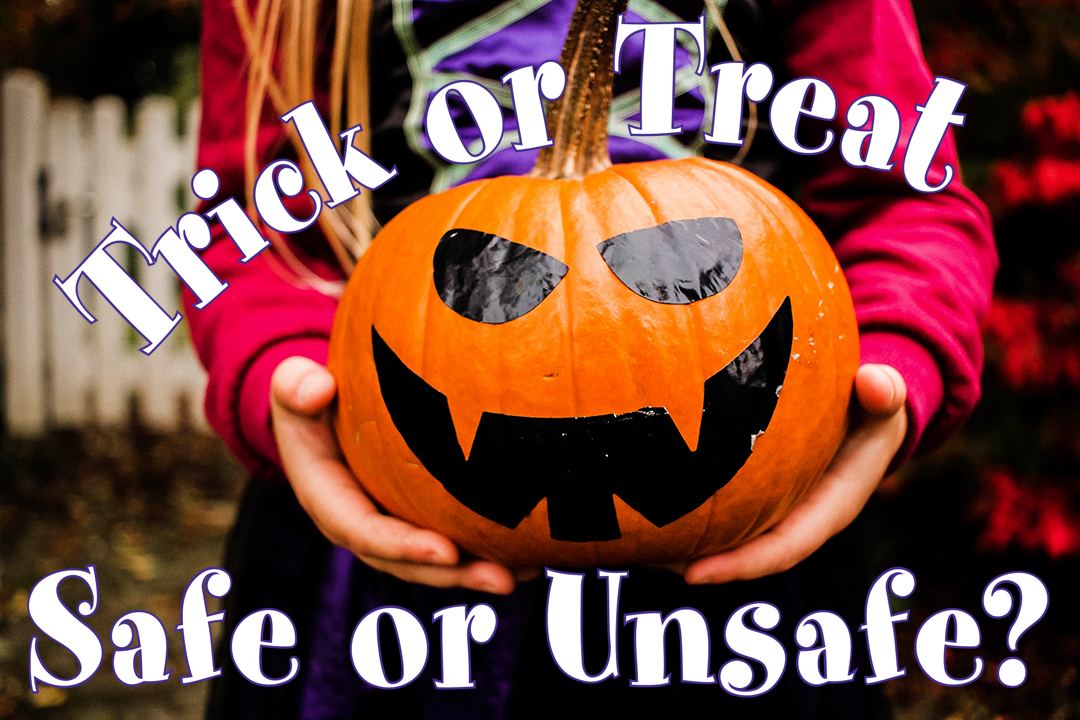
25 Oct Trick or Treat? Safe or Unsafe?
Posted at 17:15h
in Parent Involvement, Parent Engagement, Parent Education, Parenting teens, Parenting
Okay, so you are an Active Parent who wants to make sure that your child experiences childhood in all its glory and still survives to thrive later as an adult. You also buy in to the AP philosophy that “problems are for solving.” The problem you face every Halloween is how to balance fun and safety on the most accident-prone night of the year. Here are a few ideas to go with all the online research you are already doing on the subject.
- Children 5-12 should have at least one adult chaperone for about every five kids to keep a protective eye on them and make sure that among other dangers, they cross streets safely (cars, etc. possibly being the biggest risk your kids will face).
- Children under about five should have a parent or other adult holding their hand and walking with them around the neighborhood and up driveways, where they can have some freedom to go to the door on their own (but within earshot) and do their thing .
- All adults should be actively watching and supervising the kids and not texting or otherwise distracted by screens or other adults.
- Older kids should always go with at least one other kid, and preferably more.
- Before heading out to trick or treat, have a short family meeting to discuss the guidelines for safety and decorum (meaning no “tricking,” just treating, saying “thank you,” etc.). Use your AP guidelines for family meetings to make it a cooperative meeting and not just a listing of ultimatums.
- Check the kids’ treats before letting them eat any to make sure there are no allergens (peanuts?) and to remove anything unwrapped that could be contaminated.
- And if you live on Elm Street, just remember that Freddie Kruger is fiction. But accidents are very real. So, as my father the camp director use to say, “Safety first. Then fun.”
Dr. Michael Popkin
Founder and President
Active Parenting Publishers
